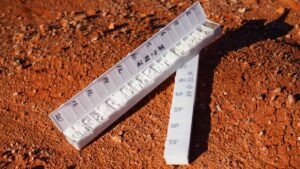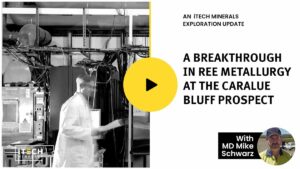•
HALLOYSITE & KAOLINITE
THE BASICS
Kaolin is a type of soft, white, powdery clay, sometimes called china clay. It is in growing demand due to new technological applications, the exhaustion of existing global reserves, and the closure of environmentally damaging mines.
Kaolin consists principally of the mineral kaolinite, which when viewed under an electron microscope, is made up of roughly hexagonal, platy crystals ranging in size from about 0.1 micrometre to 10 micrometres.
Halloysite is a rarer and more highly prized derivative, found in some kaolin clay deposits. It is highly sought after because the mineral takes the form of tiny hollow tubes, known as nanotubes. This shape gives it unique properties and a wide variety of industrial uses beyond the more common kaolinite, particularly in the emerging fields of batteries and nano-technology. As a result kaolin deposits with a high halloysite content command a significant premium.
WHAT MAKES HALLOYSITE SPECIAL?
Halloysite comes in a number of different forms including spherical, polygonal and tubular with the tubular shape being the most common structure. It can vary from 50 to 200 nanometres in thickness – 6400 times thinner than a strand of human hair. Unlike many other forms of nanotubes, halloysite nanotubes are cheap, eco-friendly and harmless in humans. This means there is uniquely exciting potential for halloysite in industrial, medical, agricultural and environmental research.
Halloysite is an alumino-silicate clay mineral with the chemical formula;
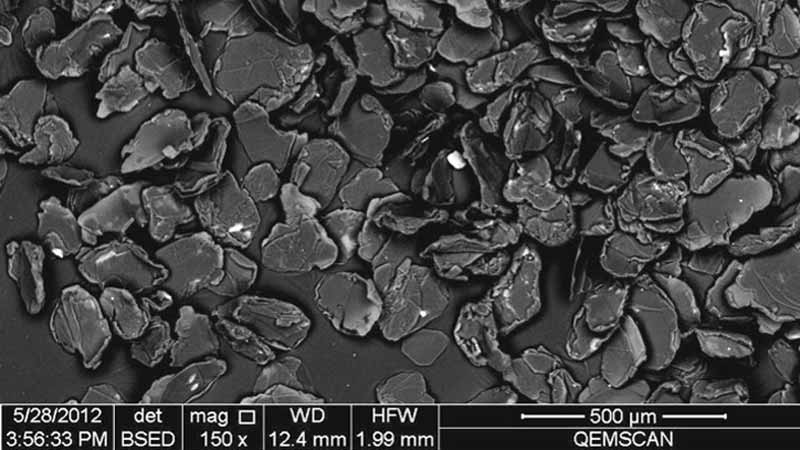
Sample from the Franklyn Kaolin Project, showing a mixture of platy and tubular forms of kaolin, interpreted as kaolinite and halloysite respectively
APPLICATIONS

THE GEOLOGY
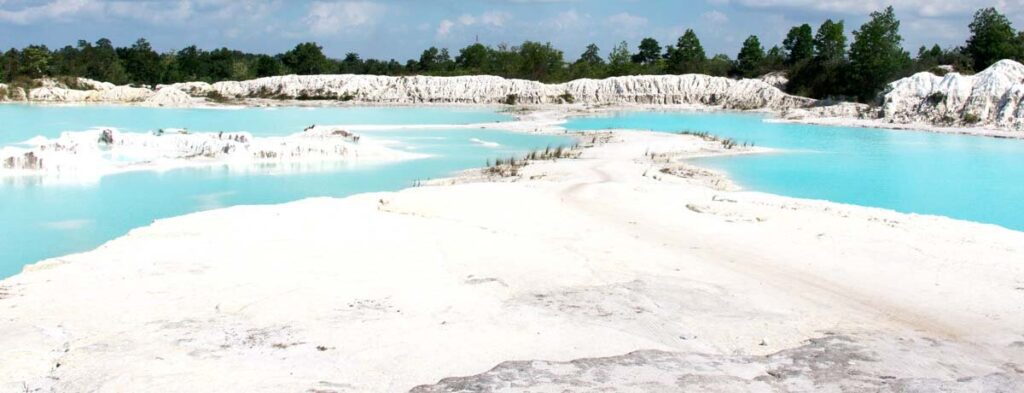
KEY GEOLOGICAL FACTORS
● The original rock must have been rich in the mineral feldspar and/or mica.
● The kaolinization process must have been intense enough to convert all the feldspar and mica to kaolin and remove other impurities such as iron and titania.
● To be economically viable the kaolin deposit can’t be buried too deeply by sand dunes or other material.
● As economic kaolin deposits need to be near the surface and are often subject to millions of year of erosion, they are often no longer well preserved or have been eroded away.
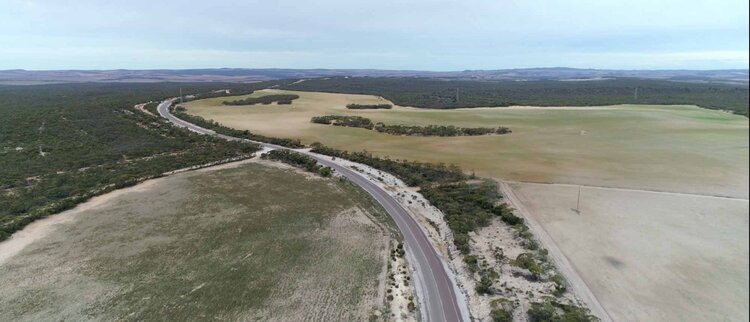
THE ECONOMICS
The cost of finding, drilling and defining economic kaolin resources is generally much less than the cost of precious and base metal exploration, such as gold or copper.
This is due to a number of factors, including:
● Kaolin deposits are generally much less geologically complex than gold or copper deposits, making kaolin deposits, faster and easier to find.
● Kaolin deposits are generally at, or near surface, so drilling averages less than 40m per hole. Most near surface gold and copper deposits have already been found. New deposits can be hundreds of metres deep and drilling costs can swiftly escalate.
● Gold and copper deposits generally occur in hard rock. Drilling through soft, shallow kaolin is quicker than drilling through hard rock, reducing drilling times and costs.
● The size and potential resources in any given halloysite-kaolinite prospect can potentially be determined in a much shorter time-frame. Kaolin deposits often have a simple geometry relative to gold and copper. If a prospect meets market requirements, it can be swiftly progressed on to development. If not, the company can pivot to the next target.
● Compared to most gold and base metal deposits, kaolin deposits generally have very little to no overburden are relatively free digging and are essentially a large-scale earth moving operation. The capital and on-going costs for this style of mining are relatively low.
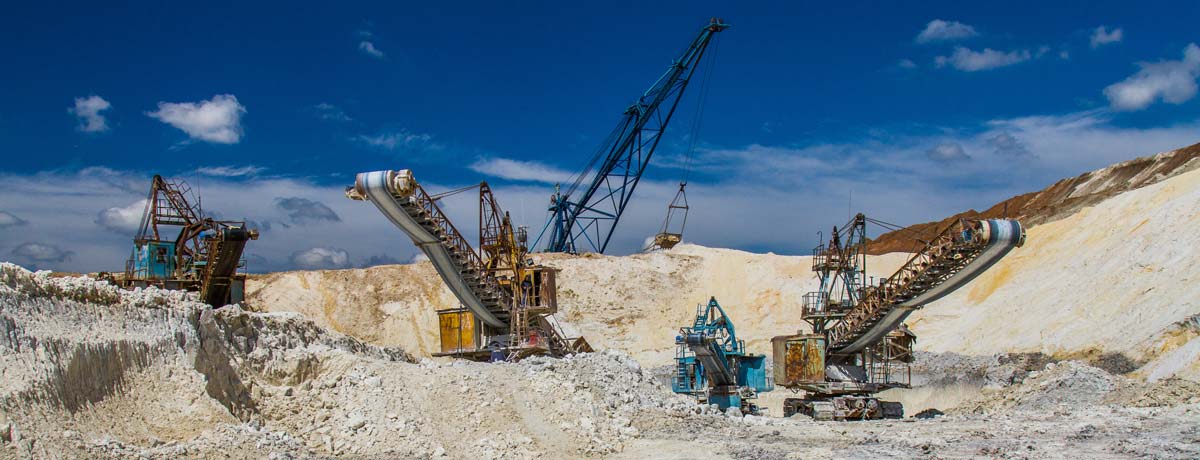
MARKETS
Kaolin is an industrial mineral, and unlike gold or copper, does not have a centralised, regulated marketplace for sales of product. Instead, individual offtake agreements and prices are negotiated with customers based on testing of the suitability of the product for customer requirements.
The following factors provide for a positive outlook for the kaolin market and in particular, the more specialised products containing halloysite:
● Increasing concerns in China regarding the impact of unsustainable mining practices are expected to limit production of kaolin, leading to supply constraints internally.
● Increasing awareness of the cost-effectiveness of producing high purity alumina (HPA) from kaolin and increasing demand for HPA in lithium ion batteries and LED light bulbs.
● An abundance of research on the application of halloysite nanotubes in fields such as safe hydrogen storage and transport, controlled release drug delivery for cancer treatment, an inert replacement for carbon nanotubes, in high-tech application such as water purification, carbon capture, soil remediation and renewable energy to name a few.
WHY iTECH MINERALS?
The projects are well situated to critical infrastructure such as shipping, water and electricity requirements and will therefore have significantly lower production costs than other projects in the region.
● Kaolin deposits have relatively low exploration, mining and development costs when compared with precious and base metals, making it more likely for a junior exploration company to raise the required capital to transition from explorer to producer.
● Time frames are much shorter for the identification of exploration success. Prospects can be quickly generated at low cost, assessed and, if suitable, progressed to development relative to gold or base metal projects.
● The company is developing pioneering technical and marketing expertise through research and development with globally respected organisations such as CSIRO and Dorfner ANZAPLAN, giving it a competitive advantage over industry peers.


